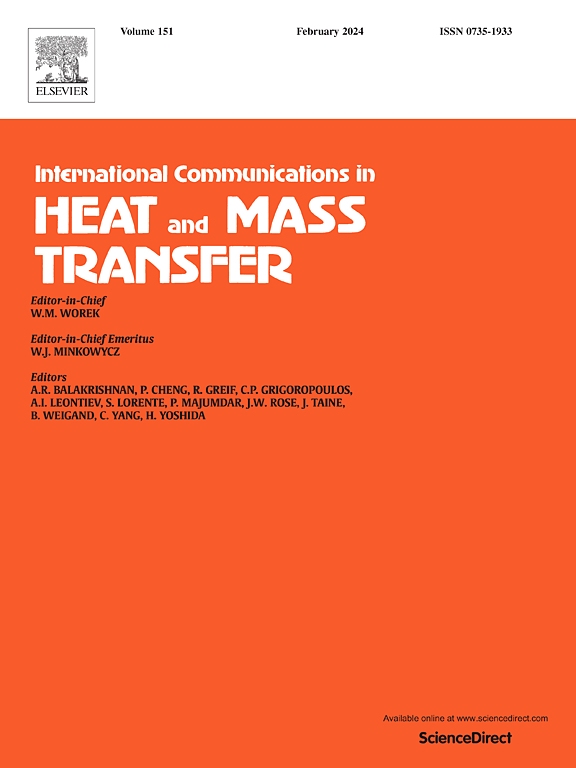Modeling and analysis of effective thermal conductivity during hydrate phase transitions
IF 6.4
2区 工程技术
Q1 MECHANICS
International Communications in Heat and Mass Transfer
Pub Date : 2025-03-21
DOI:10.1016/j.icheatmasstransfer.2025.108872
引用次数: 0
Abstract
Heat transport and mass transfer happen in the hydrate phase transition, effecting variation of the effective thermal conductivity of the hydrate-water-gas-sediment system. The effective thermal conductivity of methane hydrate and of its sediment system was measured experimentally to propose the additional coefficient formula caused by phase transition. The experimental results show that the effective thermal conductivity of the two systems were 0.2284–2.9900 W·m−1·K−1 and 1.0020–1.5030 W·m−1·K−1, and the additional coefficients were 0.5129–4.8619 and 0.5979–1.2504, respectively. The porous media structure can suppress various disturbances in the system and reduces the additional coefficient. The additional coefficient is generally normal distribution or has a linear relationship with the variational hydrate content in the phase transition stage but shows a strong linear connection with temperature in the non-phase transition stage. Based on the relation of additional coefficient and hydrate content, a correction effective thermal conductivity model is proposed to predict the effective thermal conductivity of hydrate-bearing sediment system during hydrate phase transition. The experimental data consistently fall within the predictive bounds of the model, with optimal predictive accuracy observed when the hydrate content is below 0.6. These research findings not only enrich the thermal physical property database, but also provide support for heat transfer analysis in the formation and exploitation of hydrate resources.
求助全文
约1分钟内获得全文
求助全文
来源期刊
CiteScore
11.00
自引率
10.00%
发文量
648
审稿时长
32 days
期刊介绍:
International Communications in Heat and Mass Transfer serves as a world forum for the rapid dissemination of new ideas, new measurement techniques, preliminary findings of ongoing investigations, discussions, and criticisms in the field of heat and mass transfer. Two types of manuscript will be considered for publication: communications (short reports of new work or discussions of work which has already been published) and summaries (abstracts of reports, theses or manuscripts which are too long for publication in full). Together with its companion publication, International Journal of Heat and Mass Transfer, with which it shares the same Board of Editors, this journal is read by research workers and engineers throughout the world.

 求助内容:
求助内容: 应助结果提醒方式:
应助结果提醒方式:


